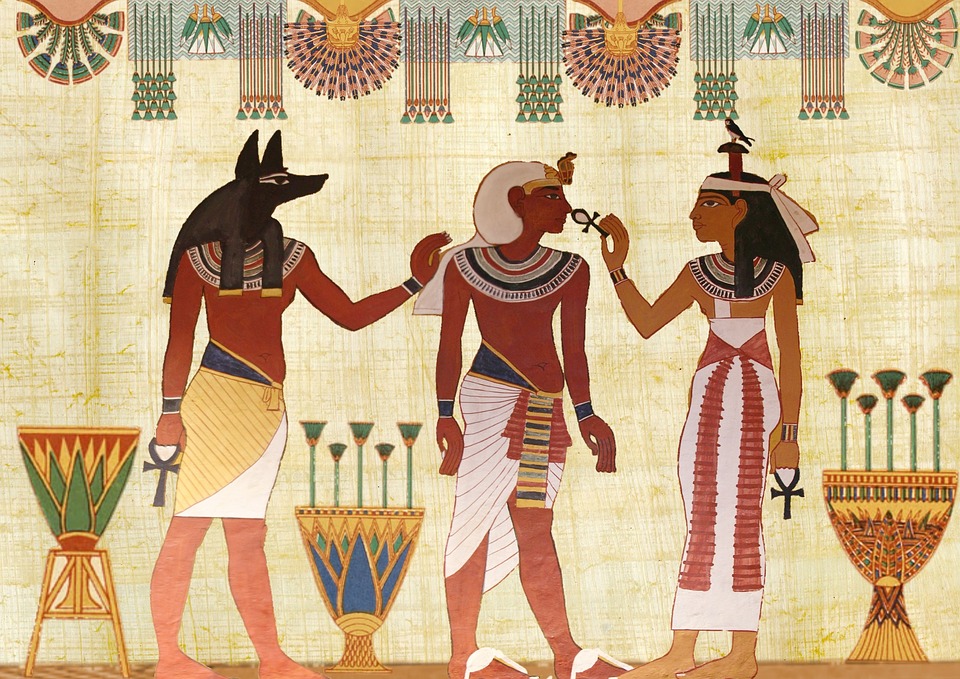Modern pen and paper has an ancient ancestor – ink and papyrus. Around 5,000 years ago, ancient Egyptians invented arguably one of the most important tools of civilized life, and their technology allowed people to communicate across vast distances for the first time. They cleverly harnessed the soot produced from the manufacturing of copper-containing ores to create the black ink color. Naturally, this idea quickly spread around the world to places like ancient Greece and Rome, which changed the world forever.
An ancient Egyptian library, Tebtunis Temple, hosts a few small cellars where hundreds of papyrus manuscripts from the 1st – 3rd centuries were discovered. Due to poor preservation, most manuscripts are incomplete. Libraries around the world, including Berlin, Cairo, Heidelberg, Turin, and Copenhagen, host collections and displays of these fragile papyrus fragments. It was presumed that carbon-based inks were used until the 4th or 5th centuries, after which time some metals were incorporated into the ink. If metals were added to ink, it would be easier for researchers and collectors to trace fragments back to their origins and piece these fragile documents back together.
Researchers from around the world collaborated to examine an archive of 1st and 2nd century ancient Greek and Egyptian papyri from Pathyris (a town in Egypt) and papyri from the Egyptian Tebtunis temple library. They wanted to determine if metals were incorporated in documents even earlier than presumed. The best way to do this was by using high-intensity lasers and x-rays in analyses called X-ray Fluorescence (XRF) and X-ray Absorption Near Edge Structure (XANES) to examine the chemical composition of the papyrus and inks.
Of the twelve fragments scanned, six revealed copper and lead. Of these six, two papyri fragments with copper from Tebtunis and two from Pathyris were chosen for further study to determine the exact chemical composition of the inks. The results from the X-ray analyses show that the black ink is carbon-based and likely came from plants. Where no contrast was observed between XRF images of the papyrus and ink, soot or charcoal were used as the black color. Where there was a contrast observed, copper or lead was present in the ink. XRF mapping of locations both inside the ink and of the papyri fabric itself helped to distinguish how the metals were distributed on the manuscripts. They found that the ink was high in copper and other elements relative to the papyri, though in some pieces, copper was also present in the fabric. With the XANES analysis, three copper minerals, cuprite, azurite, and malachite, were detected in varying abundances within the inks.
Of course, it must be noted that because these fragments are extremely old, the chemical composition is subject to change over time. Depending on how the samples were stored over time and how they were preserved by collectors, the composition and abundance of copper compounds may be altered. In some circumstances, the copper appears to have migrated along the papyri fabric, which may be due to the degradation of binding agents holding the papyri together over time.
As many combinations of copper compounds are present in and between these papyri, it is likely not possible that distinct ink signatures will be developed for certain locations in ancient Egypt. Although ink composition was too variable for one location, examination of copper and other metals may help researchers connect the fragmented ancient papyri documents and piece together a little more of ancient Egyptian history.
Research conducted at University of Copenhagen, European Synchroton Radiation Facility, Sorbonne Universites, National Autonomous University of Mexico


